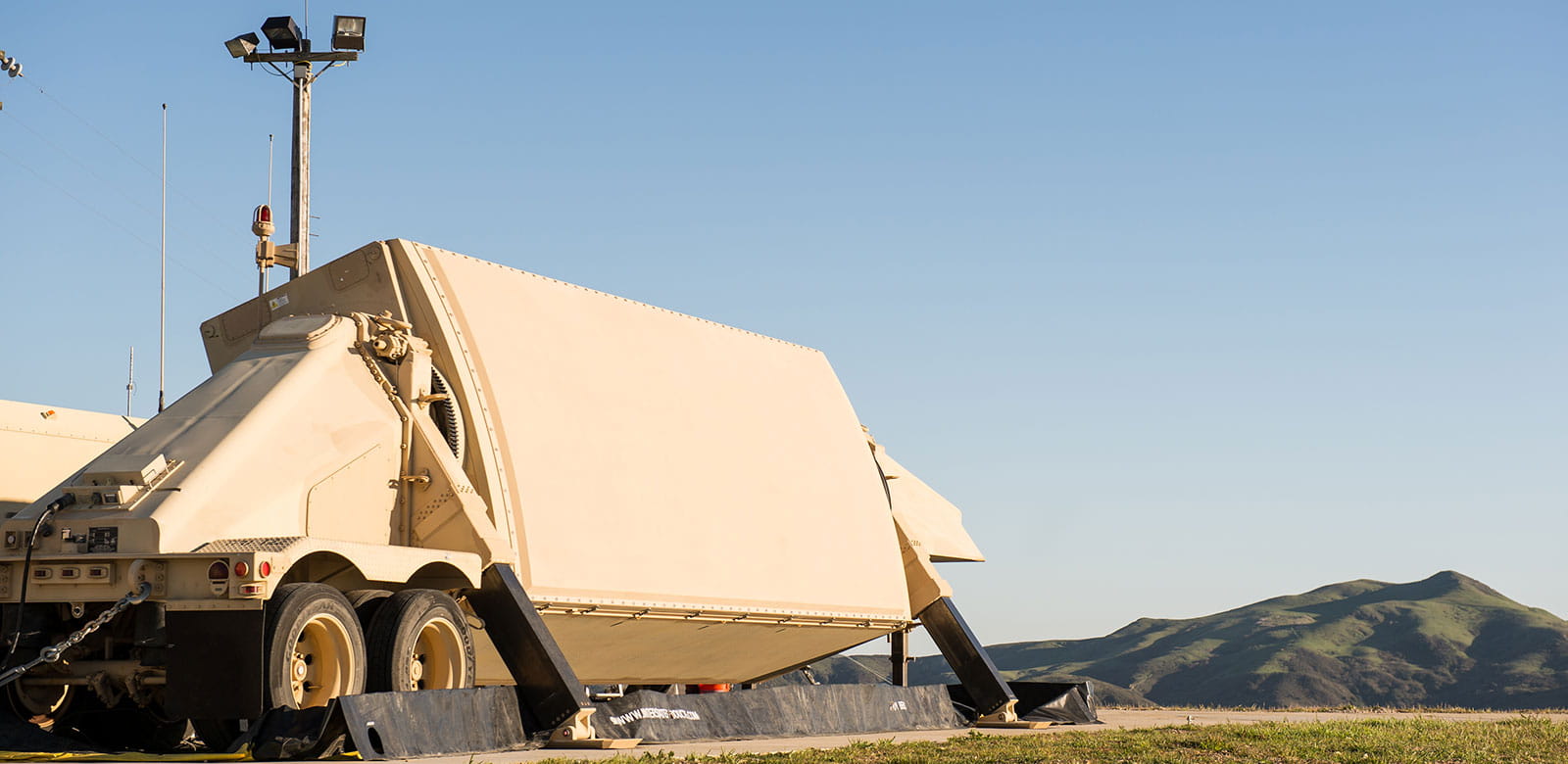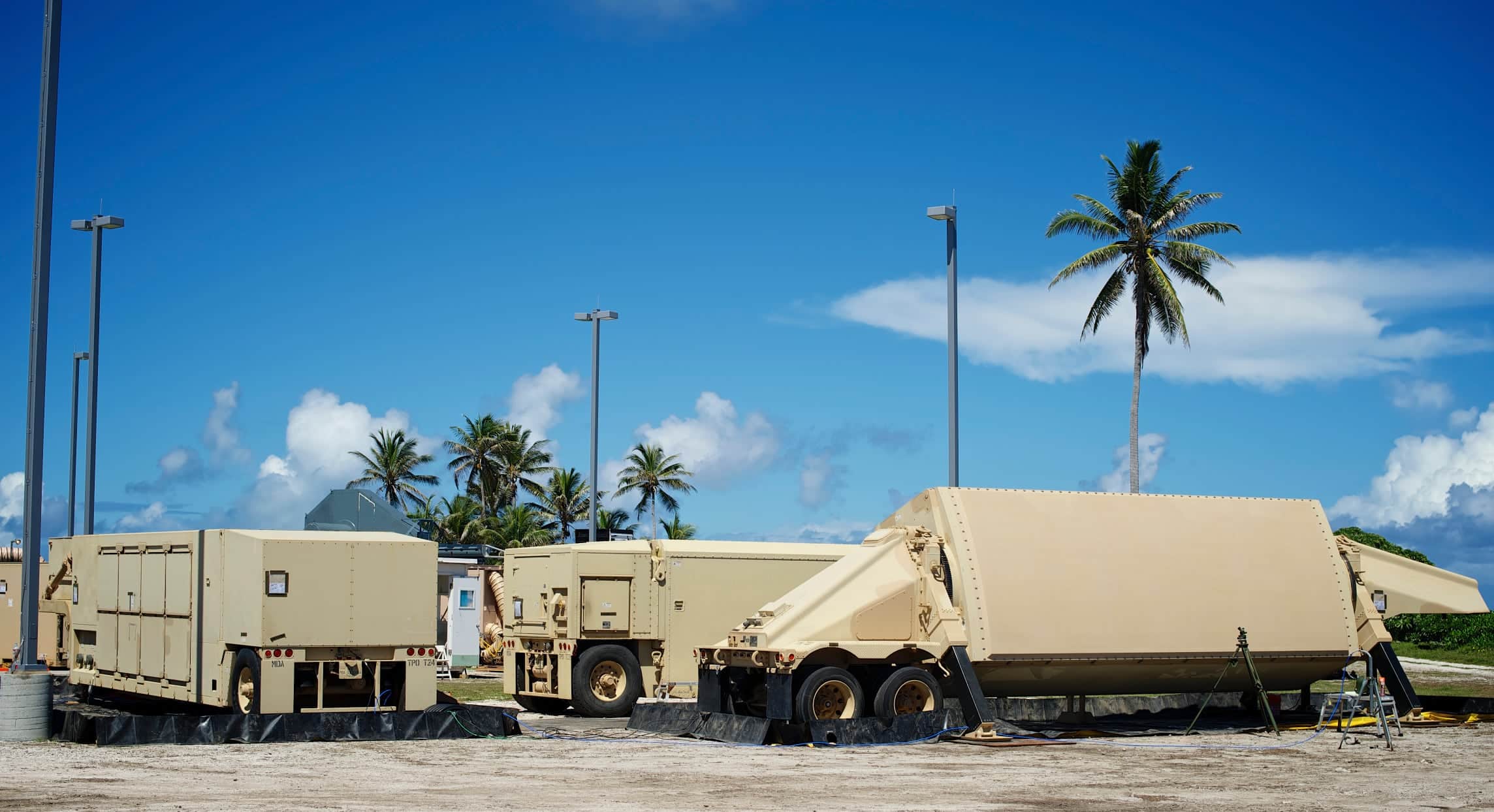Raytheon has successfully delivered the first AN/TPY-2 missile defense radar to Saudi Arabia, marking a significant milestone in a $2.3 billion contract signed in 2020.
This state-of-the-art radar is the first in its class to utilize a complete Gallium Nitride (GaN) semiconductor, enhancing its surveillance capabilities and sensitivity to potential threats.
GaN technology, known for its glasslike properties, offers numerous advantages over traditional radio frequency semiconductors, including improved energy efficiency, reduced weight, and increased power output.
These enhancements allow the AN/TPY-2 (Army-Navy Transportable Radar Surveillance) radar to achieve greater detection range and broaden its surveillance capacity, making it a critical component in modern missile defense systems.
“The latest AN/TPY-2 radar is now in a different class with Raytheon making more than 50 enhancements to the radar,” said Paul Ferraro, President, Air & Space Defense Systems, Raytheon.
“These upgrades will help Saudi Arabia to better defend itself from missile threats and will additionally benefit the entire fleet with enhanced sensing capability,” added Ferraro.
The delivery of this advanced radar is the first in a series of six additional units scheduled for production. All have been designed to complement Saudi Arabia’s Terminal High Altitude Area Defense (THAAD) system.
This milestone comes nearly three years after Raytheon secured the $2.3 billion production contract from the U.S. Missile Defense Agency, part of a foreign military sale agreement with Saudi Arabia.
The contract stems from a broader $15 billion defense deal approved by the U.S. State Department in 2017.
This package, which included 44 THAAD launchers, 360 interceptor missiles, and 16 fire control and communication units, was critical in Saudi Arabia’s efforts to fortify its air defense systems amid growing regional security concerns.
The GaN-based AN/TPY-2 radar represents a technological leap forward for missile defense. The system’s enhanced capability to detect and track ballistic missiles while simultaneously supporting hypersonic missile defense missions decisively addresses a critical concern in modern security challenges.
The Sharp-Eyed Defender of Missile Threats
Raytheon’s AN/TPY-2 radar system is engineered to detect, track, and distinguish hostile ballistic missiles at various flight stages, making it one of the most advanced radar systems in the global missile defense network.
The radar operates within the X-band of the electromagnetic spectrum, enabling it to identify targets and differentiate between genuine missile threats and non-threatening objects, such as separating debris from missiles.
In its Terminal mode, the AN/TPY-2 integrates directly into the fire control loop of the Terminal High Altitude Area Defense (THAAD) missile defense system, ensuring seamless communication with THAAD interceptors. This allows the radar to guide interceptors toward incoming threats with precision.
Bryan Rosselli, Raytheon’s Vice President of Strategic Missile Defense, emphasized, “These highly capable X-band radars are the sharpest eyes in the global missile defense system. The addition of [Gallium Nitride] technology delivers the capability for threats to be detected, tracked, and discriminated with improved radar reliability.”
The AN/TPY-2 can be transported by truck, ship, or aircraft. The system was created in collaboration with the THAAD ballistic missile defense system, enabling it to monitor targets at extended ranges and act as a catalyst for other US missile defense systems.

The radar operates in two key modes: forward-based mode, which detects ballistic missiles early in their flight after launch, and terminal mode, which is part of the THAAD system and guides interceptors toward a missile’s warhead as it descends.
The US Army also relies on the AN/TPY-2 to support the Command and Control, Battle Management, and Communications (C2BMC) system within the larger Ballistic Missile Defense System (BMDS).
This system leverages missile threat data to protect regional and strategic areas, coordinating with allied defense networks. In response to perceived threats, the US military has deployed these radars alongside THAAD batteries in multiple locations worldwide.
The Terminal High Altitude Area Defense (THAAD) system is a highly advanced anti-ballistic missile defense solution designed to intercept short-, medium-, and intermediate-range ballistic missiles during their mid-course and terminal (descent or re-entry) phases. THAAD aims to destroy incoming missile threats using a hit-to-kill method.
A Catalyst for Geopolitical Tensions
The deployment of these systems near certain territories has drawn significant opposition from US adversaries. Countries like Russia and China have strongly objected to the placement of THAAD or Aegis ballistic missile defense systems near their borders, claiming that these systems undermine their security and monitor missile programs within their territories.
China, in particular, has been vocal in its opposition, especially in response to the deployment of the THAAD system in South Korea. Beijing has raised concerns that these systems could be used for intelligence gathering, further fueling tensions between the two nations.
While Beijing does not fear that a THAAD battery could directly target its missiles—since the system only intercepts missiles in their final stage—China’s concerns center around the AN/TPY-2 radar.
This powerful radar, an integral part of the THAAD system, operates in the X-band of the electromagnetic spectrum and has a range of 1,500 to 2,000 kilometers. It is believed to be capable of monitoring missile launches and other activities deep within Chinese territory. This has raised fears that the radar could be used for surveillance rather than defense.
In 2016, when South Korea decided to install THAAD systems, China launched a fierce campaign opposing the move. The deployment led to diplomatic tensions and prompted Beijing to impose trade and cultural sanctions on Seoul, resulting in significant economic losses for South Korea.

Beijing’s objections to the radar’s deployment stem from concerns that Washington could use its advanced capabilities to gather sensitive intelligence on China’s missile activities.
Experts believe China’s main concern lies in the radar’s forward-based mode, which could provide detailed data on Chinese missile tests and offer early trajectory information to the broader US Ballistic Missile Defense System (BMDS).
Furthermore, the AN/TPY-2 radar can operate with other US systems, including Aegis, satellites, and Patriot/PAC-3 missiles, expanding its coverage and surveillance capabilities.
China is not alone in its apprehension over the radar’s deployment. Russia has also voiced strong opposition to the system. The US has stationed AN/TPY-2 radars in Japan, enhancing its presence alongside those in South Korea.
The radar in Japan serves as an intelligence-gathering tool against North Korean missile threats and can also monitor certain areas of Russian territory.
In 2017, President Vladimir Putin strongly criticized the US for positioning the radars in Alaska and South Korea, claiming that these actions presented a threat to Russian national security.
The radar drew significant attention again in early 2022 when Ukraine asked the US for THAAD batteries to bolster its defenses against Russian airstrikes. In response, Russia issued a stern warning to Washington about proceeding with such a decision.
According to reports, Ukraine sought to deploy THAAD systems near Kharkiv. The AN/TPY-2 radar would monitor Russian airspace up to 1,000 kilometers deep, providing valuable data to Ukraine and NATO allies.
Russian state media quoted a source cautioning the US against taking action that could further deteriorate the already tense situation. Both China and Russia perceive the radar’s capabilities as a threat to their defense capabilities.
- Contact the author at ashishmichel(at)gmail.com
- Follow EurAsian Times on Google News




